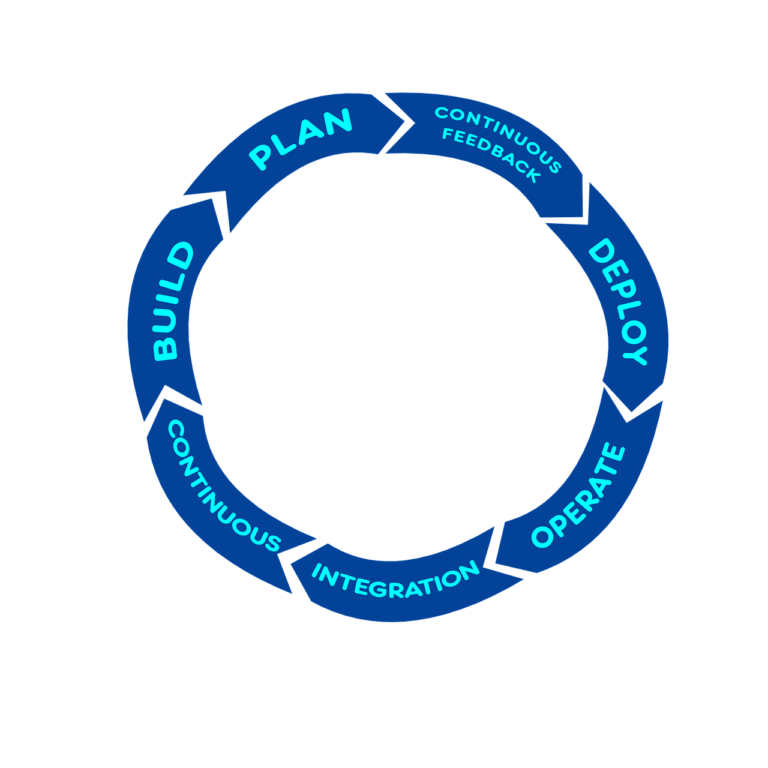How Can I Integrate Social Media Into My Overall Marketing Strategy?
In today’s digital age, incorporating social media into your marketing strategy is essential for reaching a wider audience and engaging with customers on a more personal level. By leveraging platforms like Facebook, Instagram, and Twitter, you can not only increase brand awareness but also drive traffic to your website and generate leads. Integrating social media into your overall marketing strategy allows you to create a cohesive and impactful approach that resonates with your target audience, ultimately leading to business growth and success. How Can I Integrate Social Media Into My Overall Marketing Strategy?
Have you been wondering how to effectively incorporate social media into your marketing efforts? In today’s digital age, social media has become an essential tool for businesses to connect with their target audience, build brand awareness, and drive sales. Whether you’re a small startup or an established corporation, leveraging social media can help you reach new customers and engage with existing ones. In this article, we’ll explore the various ways you can integrate social media into your overall marketing strategy to maximize your online presence and grow your business.

Understanding the Importance of Social Media in Marketing
Social media platforms such as Facebook, Instagram, Twitter, LinkedIn, and Pinterest have revolutionized the way businesses communicate with their customers. With billions of users worldwide, social media offers a cost-effective and efficient way to reach a large audience and promote your products or services. By creating engaging content, interacting with customers, and analyzing data, you can leverage social media to enhance your brand reputation and drive traffic to your website.
Benefits of Integrating Social Media Into Your Marketing Strategy
Integrating social media into your overall marketing strategy has numerous benefits for your business, including:
- Increased brand awareness: Social media allows you to reach a wider audience and increase brand visibility.
- Improved customer engagement: Social media provides a platform for two-way communication with customers, allowing you to address their needs and concerns more effectively.
- Enhanced customer loyalty: By consistently engaging with your audience on social media, you can build strong relationships and foster customer loyalty.
- Boosted website traffic: Sharing quality content on social media can drive traffic to your website and increase conversions.
- Higher lead generation: Social media advertising and campaigns can help you capture leads and grow your customer base.
By harnessing the power of social media, you can create a strong online presence for your business and stay ahead of the competition.
Identifying Your Target Audience and Goals
Before diving into social media marketing, it’s essential to identify your target audience and set clear goals for your campaigns. Understanding who your ideal customers are will help you tailor your content and messaging to resonate with them. Conduct market research, analyze demographics, interests, and behaviors to create buyer personas that represent your target audience. Once you have a clear understanding of your audience, set specific and measurable goals for your social media strategy, such as increasing brand awareness, generating leads, driving website traffic, or boosting sales.
Defining Your Buyer Personas
To create effective social media campaigns, you need to identify your buyer personas – fictional representations of your ideal customers. Consider factors such as age, gender, location, interests, pain points, and purchasing behaviors to create detailed buyer personas. By understanding the needs and preferences of your target audience, you can tailor your content and ads to resonate with them and drive engagement.
Setting SMART Goals for Your Social Media Strategy
When setting goals for your social media strategy, it’s crucial to follow the SMART criteria:
- Specific: Define clear and specific objectives for your campaigns.
- Measurable: Use key performance indicators (KPIs) to track and measure the success of your goals.
- Achievable: Set realistic and attainable targets that align with your resources and capabilities.
- Relevant: Ensure that your goals are relevant to your overall business objectives and marketing strategy.
- Time-bound: Establish deadlines and timelines to track progress and evaluate the effectiveness of your campaigns.
By setting SMART goals, you can effectively measure the success of your social media efforts and make data-driven decisions to optimize your strategy.
Choosing the Right Social Media Channels
With a wide range of social media platforms available, it’s essential to choose the right channels that align with your business goals and target audience. Each social media platform has its unique features, demographics, and user behaviors, so you need to select the channels that are most relevant to your business and where your audience is most active.
Overview of Popular Social Media Platforms
Here’s a brief overview of some of the most popular social media platforms and their key demographics:
| Social Media Platform | Monthly Active Users | Key Demographics |
|---|---|---|
| 2.8 billion | Broad demographic range | |
| 1 billion | Younger audience | |
| 330 million | News and trends enthusiasts | |
| 760 million | Professionals and B2B | |
| 450 million | Female audience, lifestyle |
Factors to Consider When Choosing Social Media Channels
When selecting social media channels for your business, consider the following factors:
- Audience demographics: Choose platforms where your target audience is most active.
- Content type: Select channels that are best suited for the type of content you plan to share (images, videos, text, etc.).
- Business goals: Align the features and capabilities of each platform with your marketing objectives.
- Resources and capabilities: Focus on platforms that match your resources, skills, and capacity to manage and create content effectively.
By carefully choosing the right social media channels for your business, you can maximize your reach and engagement with your target audience.
Creating Engaging Content for Social Media
Effective content is the cornerstone of a successful social media strategy. To engage your audience and drive results, you need to create high-quality, relevant, and visually appealing content that resonates with your followers. Whether you’re sharing posts, images, videos, or stories, every piece of content should be designed to provide value to your audience and encourage interaction.
Types of Content for Social Media
Here are some popular types of content you can create for social media:
- Blog posts and articles
- Infographics and visual content
- Videos and live streams
- User-generated content and testimonials
- Contests and giveaways
- Polls and surveys
By diversifying your content strategy and experimenting with different formats, you can keep your audience engaged and interested in your brand.
Tips for Creating Engaging Content
To create compelling content that resonates with your audience, follow these tips:
- Tell a story: Use storytelling to connect with your audience on an emotional level and make your brand more relatable.
- Use visuals: Visual content such as images and videos are more likely to grab users’ attention and increase engagement.
- Be interactive: Encourage likes, comments, and shares by asking questions, running polls, or hosting live Q&A sessions.
- Provide value: Share informative, educational, or entertaining content that adds value to your audience’s life.
- Stay consistent: Post regularly and maintain a consistent tone and style to strengthen your brand identity.
By creating engaging and relevant content, you can foster meaningful connections with your audience and drive engagement on social media.

Leveraging Social Media Advertising
In addition to organic content, social media advertising offers a powerful way to reach a wider audience, drive traffic, and accelerate your marketing efforts. Social media platforms provide a variety of advertising options, including sponsored posts, display ads, videos, and carousel ads, allowing you to target specific demographics, interests, and behaviors.
Benefits of Social Media Advertising
Social media advertising offers several advantages for businesses, including:
- Increased reach and visibility: Reach a larger audience beyond your organic followers and boost brand awareness.
- Targeted audience reach: Use precise targeting options to reach specific demographics and interests to increase conversion rates.
- Cost-effective: Social media advertising offers flexible budget options and allows you to measure the performance of your ads in real-time.
- Retargeting capabilities: Re-engage with website visitors and convert leads into customers by targeting them with relevant ads.
Types of Social Media Advertising
Here are some common types of social media advertising formats you can utilize:
- Sponsored posts: Promote your organic content to a wider audience and increase engagement.
- Display ads: Create visually appealing banner ads that appear on users’ social media feeds.
- Video ads: Share engaging video content to capture users’ attention and drive conversions.
- Carousel ads: Display multiple images or videos within a single ad unit to showcase products or tell a story.
By incorporating social media advertising into your marketing strategy, you can amplify your reach, drive conversions, and achieve your business objectives more effectively.
Monitoring, Measuring, and Optimizing Your Social Media Strategy
To ensure the success of your social media marketing efforts, it’s crucial to monitor, measure, and optimize your strategy regularly. By analyzing data, tracking key performance indicators (KPIs), and making data-driven decisions, you can identify what works and what doesn’t, and refine your approach to achieve better results.
Key Metrics to Track on Social Media
Some key metrics that you should monitor and measure on social media include:
- Reach and impressions: Measure the number of users who viewed your content and how many times it was displayed.
- Engagement: Track likes, comments, shares, and clicks to evaluate user interactions with your posts.
- Follower growth: Monitor the growth of your social media following over time.
- Click-through rate (CTR): Measure the percentage of users who clicked on a link in your post or ad.
- Conversion rate: Track the number of users who completed a desired action, such as signing up for a newsletter or making a purchase.
Tools for Monitoring and Analyzing Social Media Performance
Several tools are available to help you monitor and analyze the performance of your social media campaigns, such as:
- Social media analytics platforms (e.g., Facebook Insights, Twitter Analytics)
- Third-party tools (e.g., Hootsuite, Buffer)
- Google Analytics for tracking website traffic and conversions
By regularly monitoring and analyzing your social media performance, you can identify trends, measure the effectiveness of your campaigns, and optimize your strategy for better results.

Conclusion
Integrating social media into your overall marketing strategy can help you enhance brand visibility, engage with your audience, and drive results for your business. By understanding the importance of social media, identifying your target audience, setting clear goals, choosing the right channels, creating engaging content, leveraging advertising, and monitoring performance, you can develop a comprehensive social media strategy that aligns with your business objectives.
Remember, social media is a dynamic and constantly evolving landscape, so be open to experimentation, adapt to changes, and stay informed about emerging trends to stay ahead of the curve. By following best practices, staying consistent, and engaging authentically with your audience, you can maximize the potential of social media to fuel your business growth and success. Embrace the power of social media and unlock endless possibilities for your brand in the digital realm. The time is now to elevate your marketing strategy with social media!






